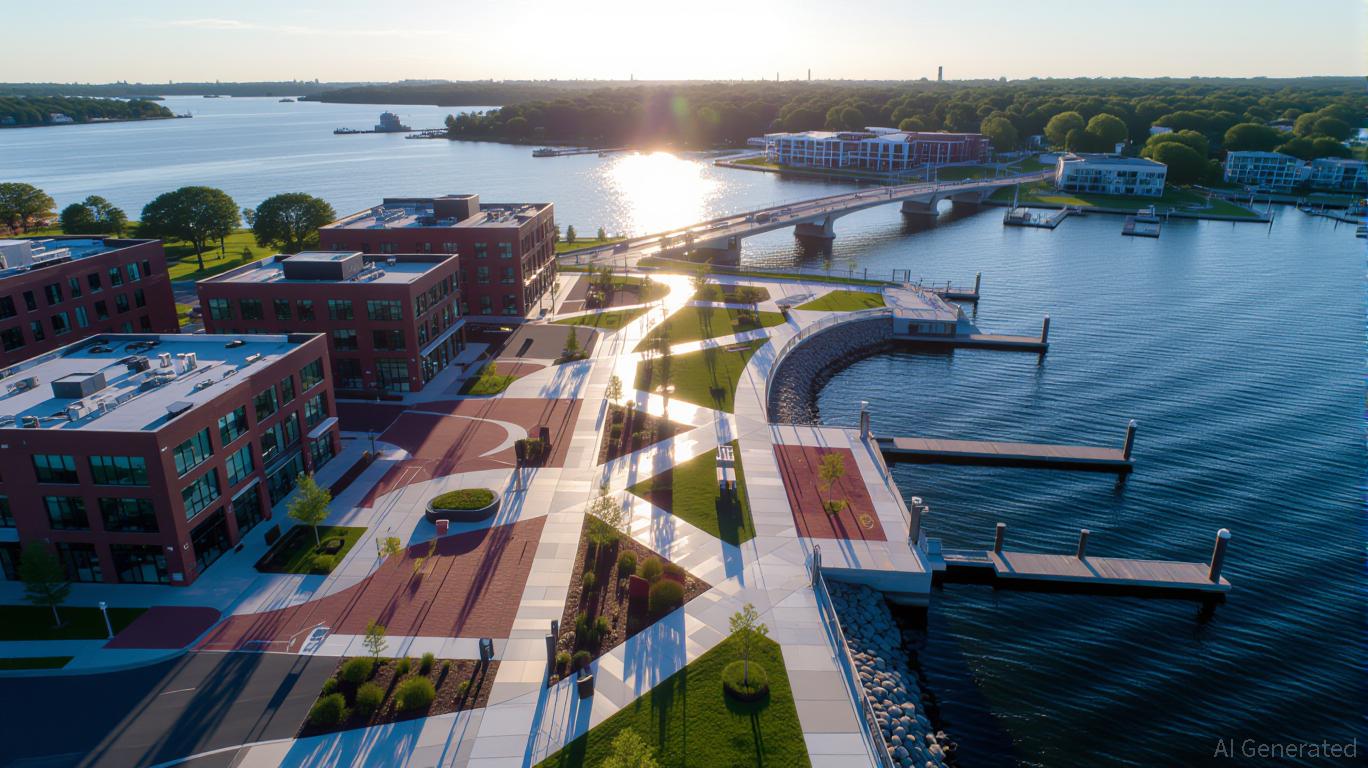Public-Private Collaborations Driving Real Estate and Industrial Expansion in Webster, NY
- Webster , NY, leverages PPPs via FAST NY and NY Forward grants to boost infrastructure, real estate , and industrial investment. - Xerox campus upgrades and downtown revitalization projects enhance connectivity, attracting advanced manufacturing and logistics sectors. - $650M fairlife® facility creates 250 jobs, demonstrating how modernized infrastructure attracts high-value industries to secondary markets. - Websters model shows PPPs can drive sustainable growth by aligning public funding with private-s
Webster, NY: A Leading Example of Public-Private Partnerships Driving Regional Growth
In recent years, Webster, New York has set a benchmark for how public-private partnerships (PPPs) can accelerate infrastructure improvements, boost property values, and attract industrial investment. Through coordinated efforts between local government and private entities, Webster has rapidly evolved into a thriving center for advanced manufacturing, logistics, and commercial activity. This overview explores how targeted infrastructure projects—supported by programs such as the FAST NY grant and NY Forward—have fueled economic expansion and established Webster as a promising destination for long-term investment.

Strategic Infrastructure: Laying the Groundwork for Progress
Webster’s transformation has been powered by two major PPP initiatives: a $9.8 million FAST NY grant dedicated to the Xerox Wilson Campus, and a $4.5 million NY Forward Program grant focused on revitalizing the downtown area. The FAST NY grant, managed by the Webster Economic Development Alliance (WEDA), is revitalizing a 300-acre former industrial site with new roads, expanded sewer capacity, and upgraded electrical infrastructure. These enhancements are crucial for attracting sectors like advanced manufacturing, food production, and renewable energy.
Meanwhile, the NY Forward Program has supported projects that improve walkability, sustainability, and community involvement in the Village of Webster. Notable efforts include upgrades to Veterans Memorial Park, renovations at Harmony House, and the installation of new wayfinding signage to make downtown more accessible. These projects are designed to energize the commercial district, foster local business growth, and draw in new enterprises.
Rising Real Estate Values: The Impact of Modernization
The benefits of these infrastructure upgrades are reflected in Webster’s real estate market. The redevelopment of the Xerox campus alone is expected to deliver over one million square feet of industrial space by 2025, appealing to companies seeking affordable labor and strategic locations. Webster and similar secondary markets have outpaced larger cities in growth, thanks to their cost advantages, skilled workforce, and effective public-private collaboration.
According to WEDA, the Sandbar Waterfront Revitalization Project—a multi-phase PPP effort—has already led to increased property values along the waterfront. By focusing on shoreline protection, recreational amenities, and educational enhancements, the project is set to further stimulate both residential and commercial development. Additionally, the demolition and planned redevelopment of the 600 Ridge Road site, supported by a $90,000 transportation planning grant, highlights Webster’s commitment to improving connectivity and pedestrian access.
Attracting Industry: Building a Hub for High-Value Sectors
Webster’s readiness in infrastructure has been a magnet for industrial investment. A prime example is the $650 million fairlife® production facility, a private investment made possible in part by the upgraded Xerox campus. This facility is expected to generate 250 well-paying jobs by 2025, with the site’s modern utilities and proximity to workforce centers playing a key role in securing the project.
The area’s emphasis on advanced manufacturing and logistics has also attracted interest from industries such as semiconductors and renewable energy. The improved electrical and transportation infrastructure at the Xerox campus provides the scalability needed for high-demand sectors. Industry experts note that Webster’s location near major transport routes, combined with its PPP-driven site preparation, makes it a compelling alternative to more expensive urban markets.
Conclusion: A Model for Sustainable Economic Development
Webster’s achievements highlight the powerful role of PPPs in driving both real estate and industrial growth. By aligning public investment with private sector needs, the community has built a robust infrastructure foundation that supports immediate economic activity and future expansion. For investors, Webster stands out as a prime example of how strategic infrastructure planning can unlock value across commercial, industrial, and residential sectors. As national initiatives like the IIJA continue to emphasize sustainability and site readiness, Webster’s approach may serve as a blueprint for other regions aiming to balance economic progress with public responsibility.
Disclaimer: The content of this article solely reflects the author's opinion and does not represent the platform in any capacity. This article is not intended to serve as a reference for making investment decisions.
You may also like
DOGE Holds $0.1499 Support, Reviving Long-Term Bullish Structure and $1 Projection

Dogecoin Holds $0.144 Support as Price Climbs to $0.1484 in Tight Reversal Range

SOL Trades Near Resistance While Heatmap Highlights Major $145 Liquidation Band

Shiba Inu Steadies at $0.058657 as SHIB Defends $0.058065 Support and Eyes a Break Above $0.058879
